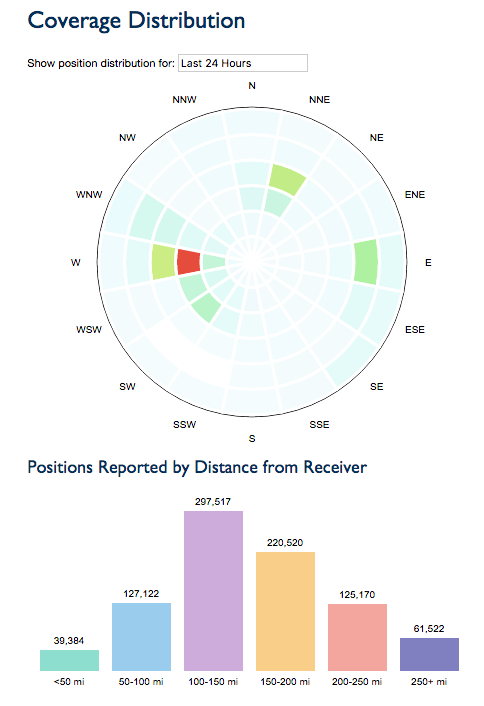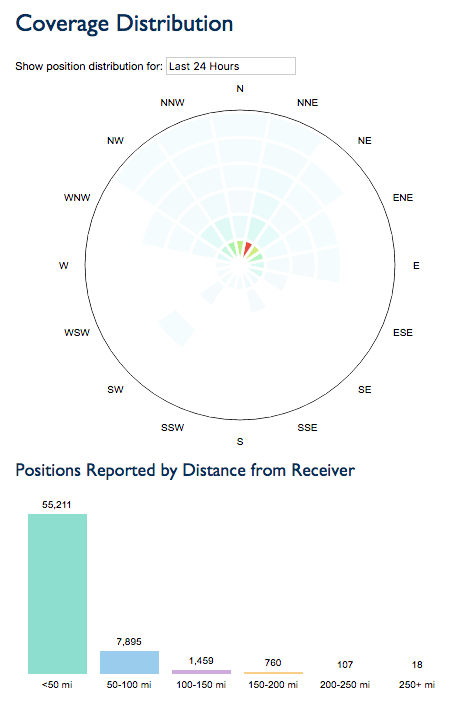The basics of checking your receiver site's coverage and rangeAs we discussed in our "ADS-B Antennas" blog post, your antenna and how it is installed can have a big impact on how many aircraft your site receives. So, how do you know if your site is receiving the most aircraft that it can? The easy answer is to check the Coverage Distribution graphs on the "My ADS-B" page at flightaware.com (click "My ADS-B" at the top of any page). The "My ADS-B" page has lots of statistics that tell you how well your receiver is working. If you haven't checked out this feature before, you definitely should.
The coverage distribution graph (sometimes referred to as a "polar" graph or chart due to its format) shows the pattern of coverage around your site. The chart represents a "heat map" showing the sectors of the sky around your site from which you are receiving aircraft signals. The sectors with the most aircraft messages will be darker colored.
In the first example below, we can see that most aircraft messages are from the red sector to the west of the site (in this example, it is likely that there is an airport in or near that sector due to the concentration of data in that one location). A less optimized site will not see see aircraft in all of the sectors. Most sites will in theory see planes over time in all sectors, however sites in isolated or rural locations with limited flights overhead may only ever see aircraft in certain sectors -- each site is unique!


The histogram (bar chart) below the polar chart shows the distribution of position messages by distance from the receiver. From the first example, we can tell the site has very good range because it is receiving significant amounts of messages from 250+ miles (400+ km) away. The best sites will see planes from over 250 miles (400 km)! Is your site that good?
Remember that your antenna needs an unobstructed view of the sky as high up above terrain as possible. The best antenna installations are on a roof, mast or tower and above any obstructions. The second example (above) shows a site that has modest range (some distant aircraft received but not many) but most notably this site has significant obstructions blocking aircraft signals to the south, as almost all positions are being reported north of the site.
Think you've got the best site out there? Share your results on Facebook, Twitter or our discussion forum!
For those interested in joining the ADS-B community, FlightAware offers step-by-step instructions to build a PiAware Receiver for under $100.
ADS-B hosts located in areas needing additional coverage might be eligible for a FlightFeeder, a free, prebuilt ADS-B receiver.
FlightAware invites you to join the ADS-B network. You'll become part of a community of aviation hobbyists across the globe and start seeing the skies in a totally different way.
 Back to Flight Tracking
Back to Flight Tracking

Join the discussion...
Leave your comment below.